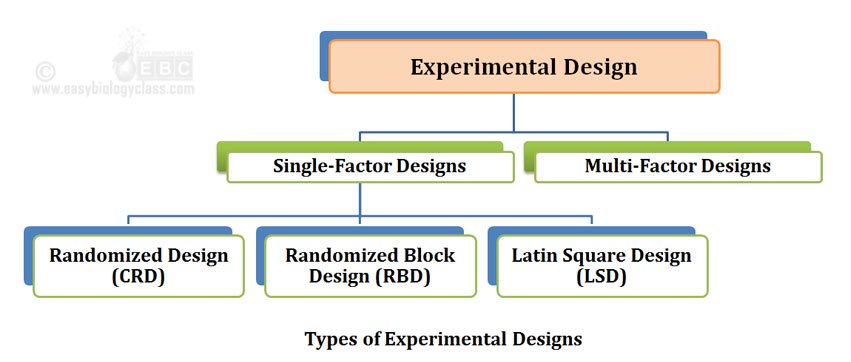Basic Principles of Statistical Design of Experiments
This allows us to equalize the effects of unknown or uncontrollable sources of variation. Fisher there are three types of basic principle of experimental design.

An Intuitive Study Of Experimental Design Statistical Aid
For example A farmer wants to know whether new type of fertilizer will give him better yields.

. 13 1999 by Robert Kuehl Author 45 out of 5 stars 12 ratings Design of Experiments. Statistical Analysis of Data Purpose of Statistical Analysis Descriptive Statistics. Basic Principles of Experimental Design Basic Statistics.
Statistical Principles of Research Design and Analysis by Robert O. Randomly assign subjects to treatment groups. Control Experimental Blocking Matching Randomization Statistical ANCOVA Multiple Regression Structural Equations Theory and Scientific Judgment Simon.
Things to remember when designing a Statistical Experiment. The first principle of an experimental design is randomization which is a random process of assigning treatments to the. Randomize -- use chance to assign subjects to treatments.
This problem has been solved. Approach 1st Edition - WileyPDF Basic statistical tools in research and data analysisBASIC PRINCIPLES OF EXPERIMENTAL DESIGNS in Research PDF STATISTICAL ANALYSIS WITH SPSS FOR RESEARCH STATISTICS - University of Washington Dec 03 2021 Analysis of variance on the collected data from the Taguchi design of experiments can be used to. Designing Experiments Key Concepts Randomization 19 31 Blinding De nition An experiment is blinded if the subjects do not know which treatment group they are in.
The more replication would provide the increased precision by reducing the standard error SE of mean as s y s r where s is sample standard. Use a clear and comprehensible language to ease the cognitive burden for the respondents. Design of experiments statistical principles of research design and ysis is available in our digital library an online access to it is set.
Several important facts are stressed. Randomize to avoid confounding between treatment effects and other unknown effects. Basic Principles of Experimental Designs.
It sounds obvious but questions need to be clear and unambiguous. The three basic principles of statistical design of experiments are Control Randomization and Repetition. Control the effects of lurking variables on the response most simply by comparing two or more treatments.
113 The Four Principles of Experimental Design 1. Basic Principles of Experimental Design Randomization Randomization is the cornerstone underlying the use of statistical methods in Page 48. They are given below.
If relevant causes are NOT included in the. The basic principles of statistical design of experiments are. Basic Principles Of Experimental Design Basic Statistics the basic principles of experimental design are i randomization ii replication and iii local control Aug 29 2020 design of experiments statistical principles of research design and analysis Posted By Stephen KingPublishing 30 E-Learning Book Design Of Experiments Statistical.
They allow one to measure the influence of one or several factors on a response. An experiment is double blind if both the subjects and the researchers measuring responses are unaware of the treatment group for each subject. The random allocation of treatments to the experimental units.
Basic principle of experimental design According to Prof. The three basic principles of statistical design of experiments are A control comparison confounding. Ad Browse Discover Thousands of Science Book Titles for Less.
The basic principles of statistical design of experiments are 3 things. Central Tendency and Variability Measures of Central Tendency Mean Median Mode Measures of Variability Range Variance and standard deviation The Importance of Variability Tables and Graphs Thinking Critically About Everyday Information. Statistical Principles of Research Design and Analysis Hardcover Aug.
And experiments designed without adhering to statistical principles usually violate one or more of these desirable design goals. D randomization control pairing. B control randomization repetition.
1999 Design of Experiments Statistical Principles of Robert Kuehl s DESIGN OF EXPERIMENTS Second Edition prepares students to design and analyze experiments that will help them succeed in the real world. Replication means repetition of basic treatments under investigation. Use enough subjects in each group to reduce chance variation in the results.
Speaking a good experimental design will among other things tend to maximize primary variance minimize error variance and control secondary variance. C blocking blinding bias avoidance. Basic Principles Z X Y We must control Z or include it.
They allow the estimation of the magnitude of experimental error. Statistical Principles of Research. There are three basic principles behind any experimental design.
The second principle of an experimental design is replication which is a repetition of the basic. Gilmour Author 30 out of 5 stars 1 rating See all 4 formats and editions. What are the five basic principles for designing a good questionnaire.
Statistical Principles for the Design of Experiments Cambridge Series in Statistical and Probabilistic Mathematics Hardcover 31 Aug. The idea in maximizing primary variance is that in designing the experiment the experimenter chooses levels of the independent variable that are expected to. The basic principles of statistical design of experiments are.
Control sources of variation other than the factors being tested by making conditions as similar as possible for all treatment groups. The repetition of a treatment within an experiment allows. Statistically designed experiments are economical.
The basic principles of statistical design of experiments are. It allows the experimenter to obtain an estimate of the experimental error. E comparison blocking pairing.
In a experiment we must control hold constant other possible causes of X. When we say the design of an experiment or experimental design we refer to the manner in which these three principles are carried out. To quantify the natural variation between experimental units.
See the answer See the answer See the answer done loading. Control the effects of lurking variables on the response most simply by comparing two or more treatments.

Design Of Experiments An Overview Sciencedirect Topics

Comments
Post a Comment